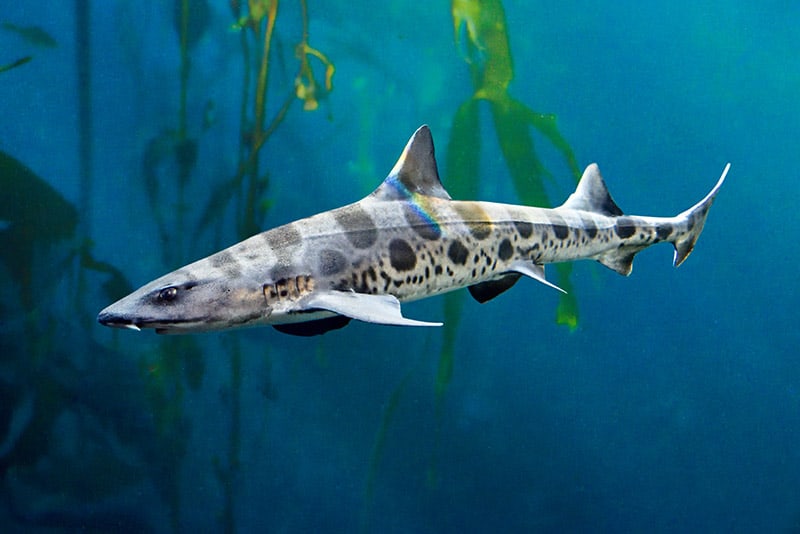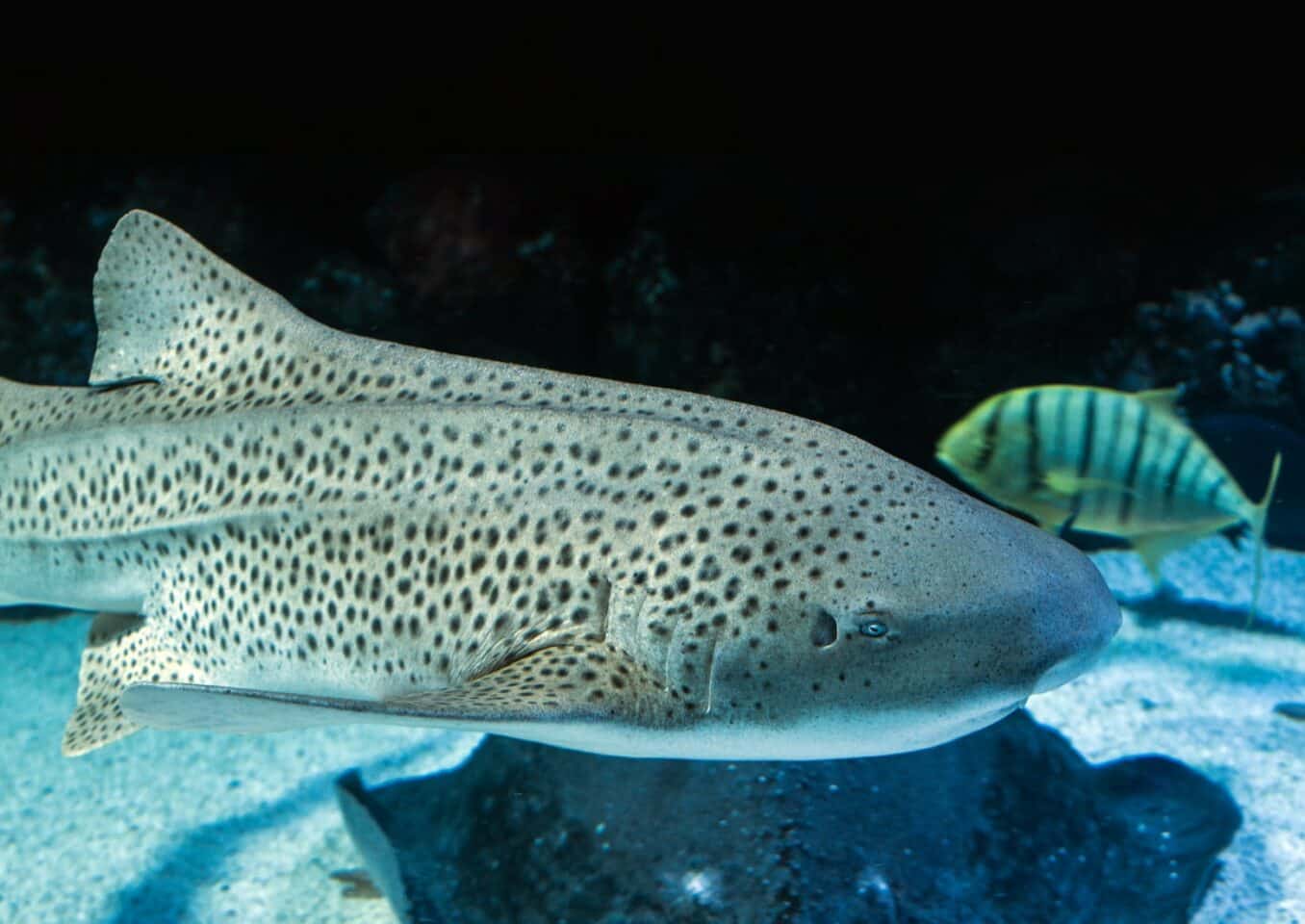Leopard Sharks are a beautifully marked shark that are very interesting to watch. They swim constantly and tirelessly. Their nose is much better than their eyes which is evidenced by the circling motions when they smell food but cannot see it.
The Leopard Shark is a cold water fish that can be found off the coast of Oregon and California (as well as other places). Because they are better adapted to cold water and because of their large size, the Leopard Shark should not be purchased by the average hobbyist.
There is another fish that is commonly called the Leopard shark, Stegostoma fasciatum, which is found on the Great Barrier Reef and the Coral Sea. This shark is a slow swimming bottom dweller.
- For more information on keeping marine fish see: Guide to a Happy, Healthy Marine Aquarium
Scientific Classification
| Kingdom: | Animalia |
| Phylum: | Actiniform |
| Class: | Elasmobranchii |
| Order: | Carcharhiniformes |
| Family: | Triakidae |
| Genus: | Triakis |
| Species: | semifasciata |

Maintenance difficulty
The Leopard Shark is easy to keep if you have a large enough aquarium.
Maintenance
Feed all kinds of large meaty foods like small pieces of fish, squid, shrimp, and live goldfish. Best to feed small amounts several times a day.
Habitat: Natural geographic location
Eastern Pacific Ocean from Oregon to Gulf of California and Mexico. They are an abundant species in cool and warm-temperate waters. They are most commonly found on or near the bottom in shallow water, at depths from 4 to 90 meters. They prefer sandy or muddy bays.
Foods
Feeds primarily on bottom-living invertebrates. See “maintenance” above for typical aquarium foods.
Social Behaviors
This fish can be kept with other fish and is usually no problem even with smaller fish that could be eaten. They usually only try to eat fish that are either dying or distressed. In their natural environment they are an active, strong swimming species. Therefor they need a rather large aquarium. In the wild they form large nomadic schools. They are often seen together with Brown smooth-hound shark, Mustelus henlei, and the Gray smooth-hound shark, Mustelus californicus or the Piked dogfish, Squalus acanthias.
Sexual differences
The medial edges of the male’s pelvic fins are modified to form claspers. The claspers are tubelike organs designed to deliver sperm into the female’s reproductive tract. As the males grow older the claspers become more pronounced. The females do not have these.
Recommended light levels

Breeding/Reproduction
The Leopard Shark is ovoviviparous and gives birth to live young. They are ovoviviparous and bear between 4 and 29 pups per litter. Size at birth about 20 cm. The pups exhibit a fairly slow growth and will not reach maturity until an age of about 10 years.
Ellen Kelley from the Wrigley Marine Science Center told us: “Leopard sharks aggregate in the shallow waters of the marine refuge at the Wrigley Marine Science Center during the warmer months. Supposedly they are pregnant females. It is possible the warmer water hastens the development of their young. This phenomenon has been observed in other shallow water areas along the southern California coast as well.”
- You can learn more at the: Wrigley Marine Science Center
Temperature
This is a cold water fish, so may do poorly in a tropical aquarium above 70 degrees F.
Length/Diameter of fish
Males grow to a size between 70 and 120 cm, females are larger at an adult size of 110 – 130 cm.
Minimum Tank Length/Size
A minimum 400 gallon aquarium is recommended.
Water Movement: Weak, Moderate, Strong
Likes water movement and an aquarium with large open spaces as it is constantly swimming around.
Water Region: Top, Middle, Bottom
Spends time at all water levels but mostly on the bottom or middle of the aquarium.
Availability
This fish is available from time to time and is expensive.
- Beginner Fish – Saltwater fish for beginners
- Community Fish – Peaceful Saltwater fish
- Hardy Fish – Hardy Saltwater fish
Featured Image Credit: David Clode, Unsplash
